NVIDIA’s CES 2019 keynote was solely focused on gaming. The big announcement of CES 2019 for NVIDIA is the launch of the NVIDIA RTX 2060. Normally, the company goes beyond gaming and talks about automobile AI and sometimes data center. The company did not do that this time. We are going to focus briefly on the NVIDIA Turing architecture, and how the company is using its DGX-2 training servers to enhance its products. We are then going to look at the NVIDIA GeForce RTX 2060 6GB announcement.
NVIDIA Turing Architecture Recap
We already covered the NVIDIA Turing architecture several times. On stage, Jensen Huang, CEO of NVIDIA, discussed how the new Turing architecture can do integer and floating point math, it has L1 cache and register files that are more fungible, the L2 cache is doubled, and there are Tensor Cores and Ray Tracing cores in its RTX series.
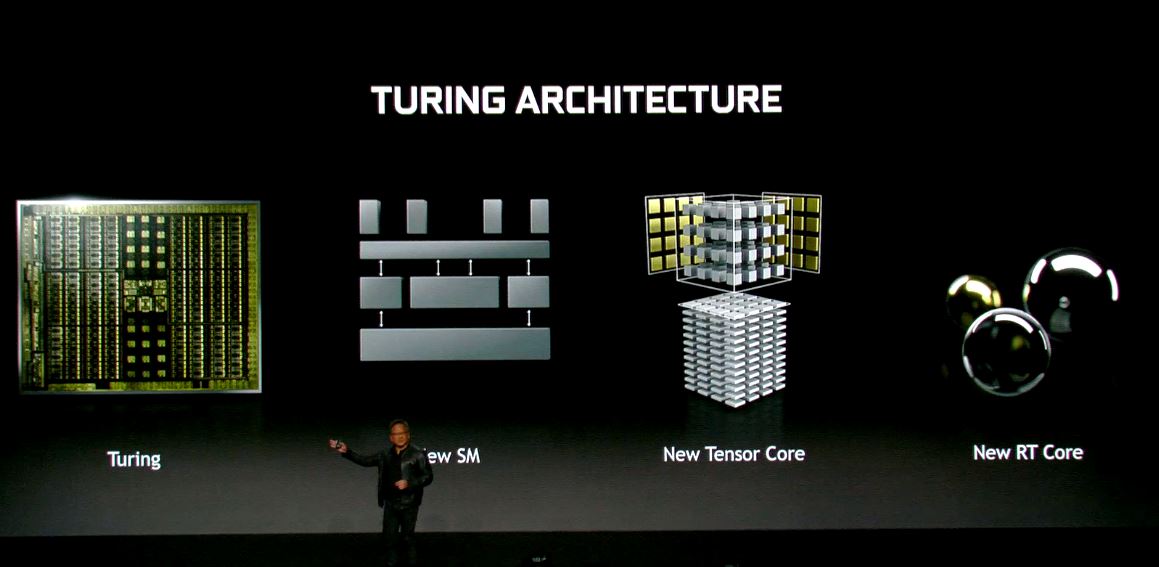
The Tensor Core is a feature we first saw in the NVIDIA Tesla Volta V100. NVIDIA believes these Tensor Cores are the future for inferencing as well. We saw the Tensor Core make an appearance when NVIDIA Turing was introduced with the Quadro RTX line and then with NVIDIA GeForce RTX 2080 Ti 2080 and 2070 and NVIDIA Titan RTX with 24GB and NVLINK as follow-on RTX parts. All of these parts include the Tensor Core but they are also the higher-end parts.
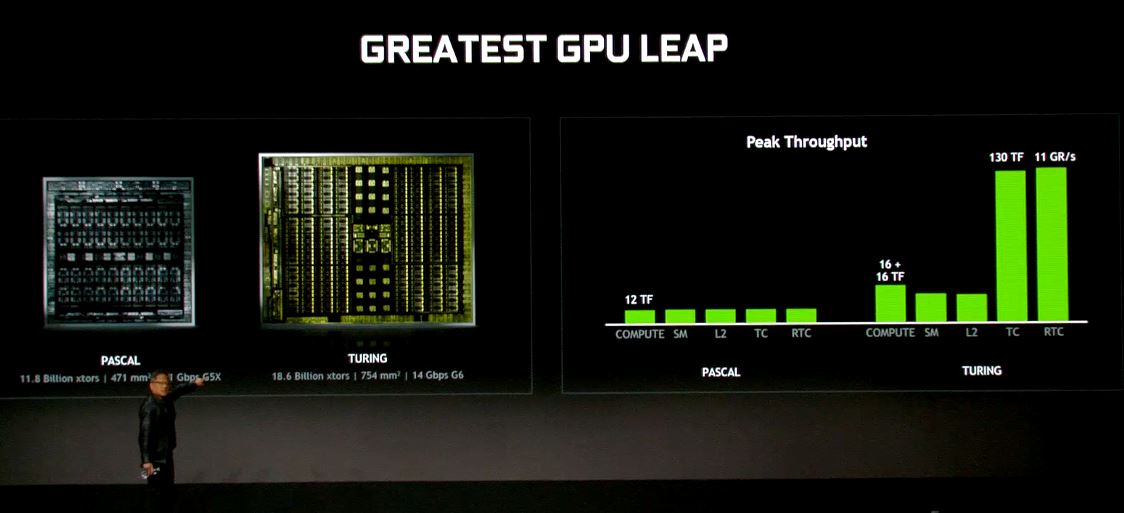
The Tensor Core is how NVIDIA is integrating dedicated AI math logic into its GPUs. It is also NVIDIA’s latest GPU design. NVIDIA shows Pascal to Turing without Volta. Volta primarily stayed in the data center. Key here is that NVIDIA is showing major compute performance benefits over Pascal with Turing.
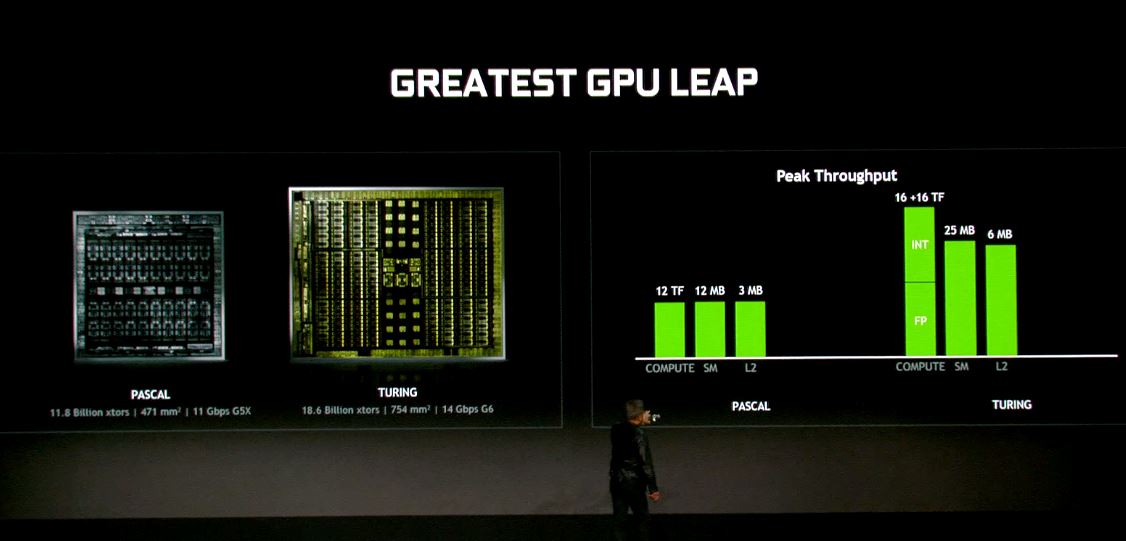
NVIDIA believes that it can use DLSS, a deep neural network, about how graphics should look. NVIDIA says it has racks of DGX-2 systems working on this problem, training a high-quality image.
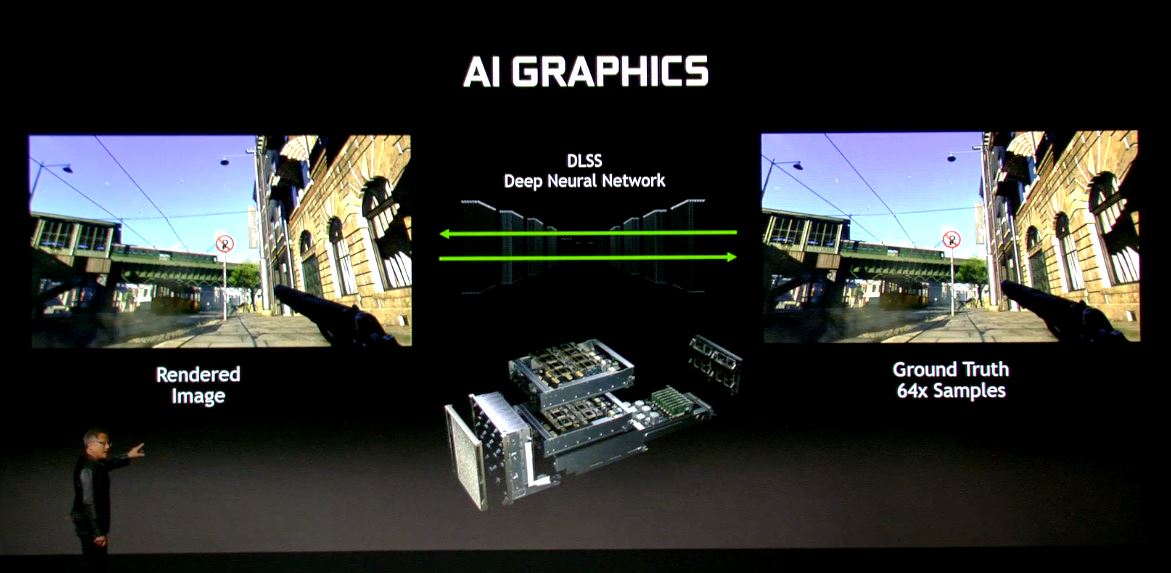
That is an important advancement that NVIDIA is working on. Using DLSS, one can render a lower-quality image and end up with high-quality graphics. Although this is focused on gaming now, it will not be long until it comes to tools like Photoshop. The important feat here is that what NVIDIA is doing with DLSS and its AI graphics is what other companies will have to do. Train models that allow one to use lower-power inferencing to do tasks that would otherwise take too much compute power to accomplish.
NVIDIA GeForce RTX 2060 GPU Launched
The big hardware announcement of the CES 2019 keynote was the NVIDIA GeForce RTX 2060 GPU.
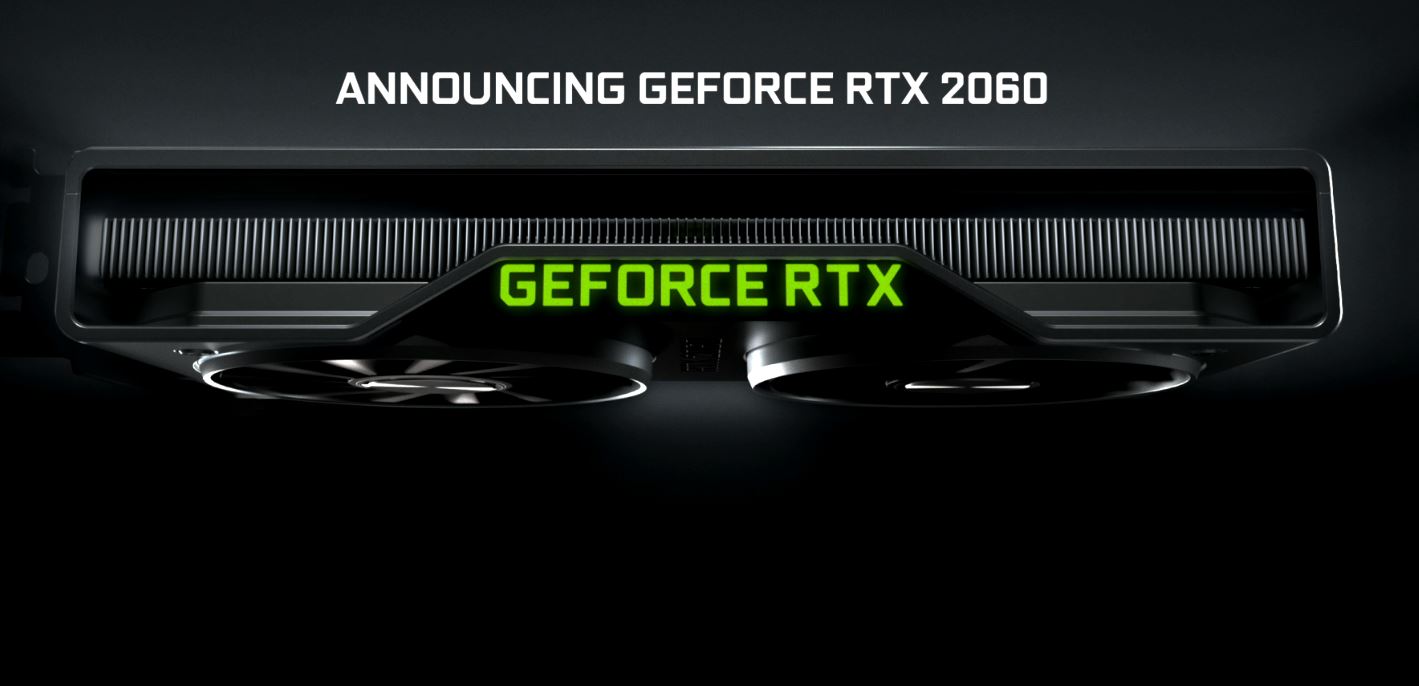
Like the RTX 2080 Ti, RTX 2080, and RTX 2070, the cooler on the Founders Edition is a dual fan unit and no longer a blower cooler.
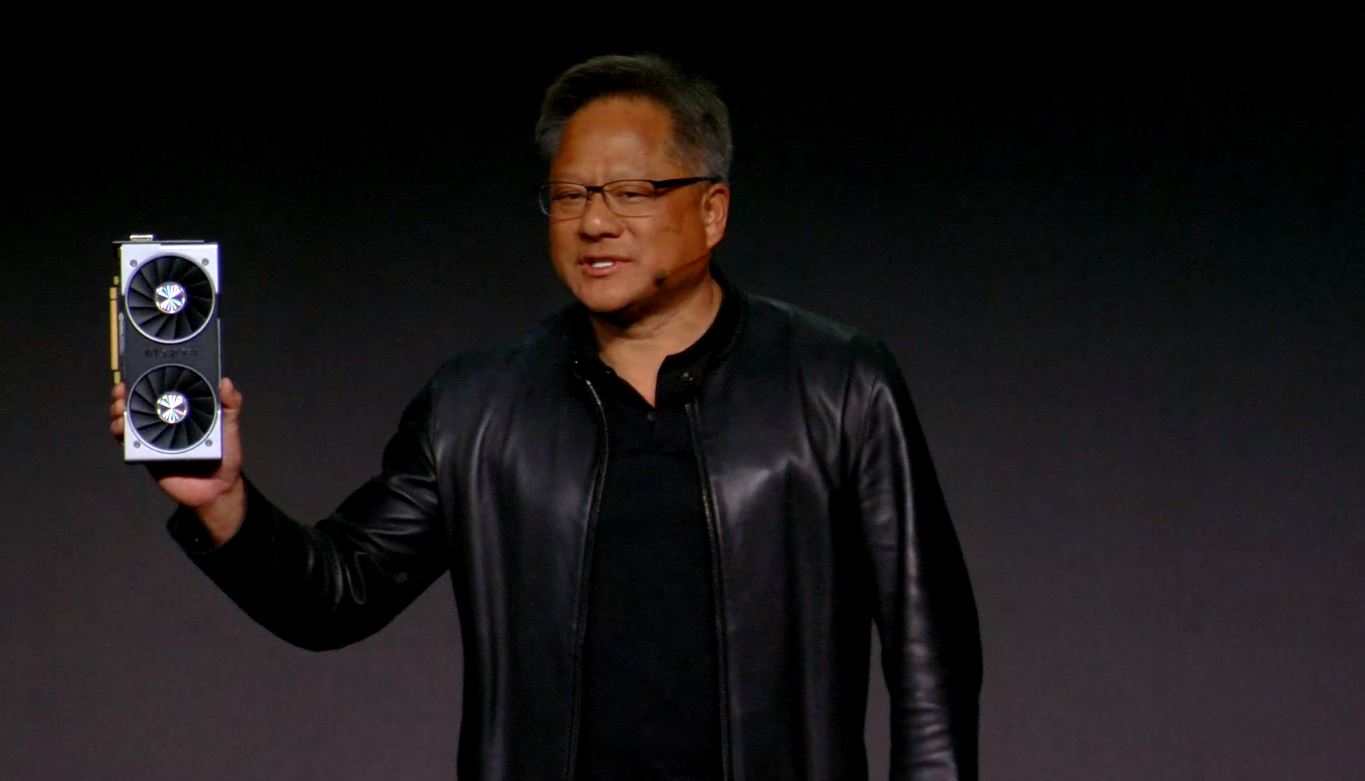
The NVIDIA GeForce RTX 2060 has a total of 6GB of GDDR6 memory. The MSRP is $349 which is lower than the NVIDIA GeForce GTX 1070 Ti that it is targeted to be performance competitive with. Specs for the card are 52T Tensor FLOPS and 5 gigarays/ second.
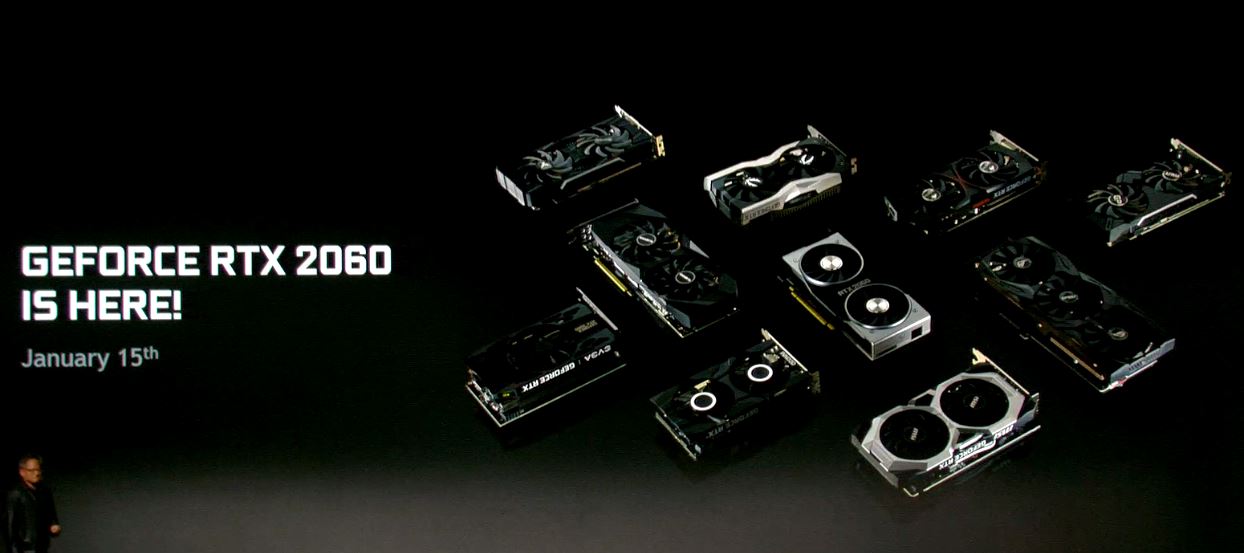
Both the GeForce RTX 2060 Founders Edition and add-in partner boards will be available on January 15, 2019. NVIDIA also has a number of driver enhancements launching the same day. Official specs list the GPU as a 160W part with a 192-bit 336 GB/s memory interface and its 1920 CUDA cores running with 1365 (base) / 1680 (boost) GPU clocks.
Final Words
These are announcements we would expect from NVIDIA. The company has a long history of launching high-end parts first, then moving down the product stack over time. For STH readers thinking of adding a low-cost GPU to their servers, this is now the lowest cost Turing architecture on the market. It is also a good example of how NVIDIA is using GPU compute servers to train DLSS and then embedding an AI engine in its products to enhance capabilities. This is a model many of our readers will want to emulate.
If you want to see the entire keynote, here is a video embed for you. Here is a link to the official product page as well.

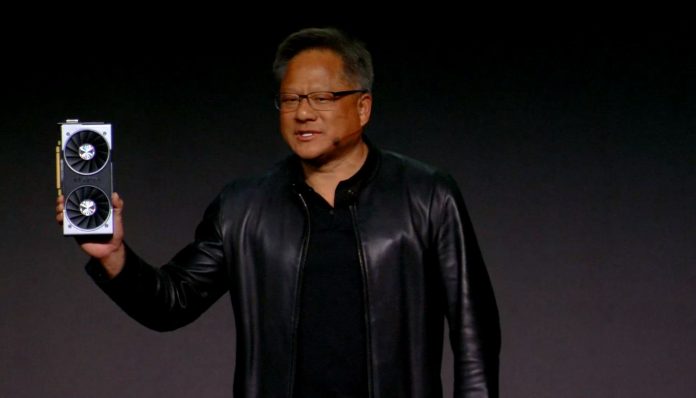



Same speed (max 6.5 Tflops fp32) and price as the GTX1070, just 2 GByte less VRAM. “Just buy it”, “It just works”
I think the 6GB on a $350 card is DUMB.
But benchmarks are putting it at like the sane if not a little faster than the 1070 Ti in gaming but you get some Tensor cores to play with.
If you’ve got Pascal, I don’t think you’re upgrading but most people will buy these for new systems so it’s not like your going to use anything other than 1080 Tis which are hard to buy in a new system.
same crap nvidia is playing games with us consumers like intel were til amd came out with ryzen and TR.
Nvidia will keep doing this bs til they are challenged by amd hard…. that is just the unfortunate fact….